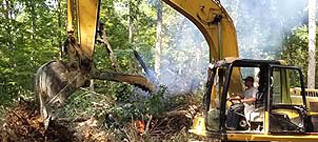By LAUREN C. WILLIAMS
WASHINGTON (March 13, 2009)—Warmer weather and sunny skies are just around the bend, which, sadly means the mosquitoes are not too far behind.
But it may not be time to stock up on the bug repellant and cortisone cream.
There are "multiple factors" that determine the strength of the mosquito population's emergence, said Kim Mitchell, chief of Rabies and Vector-Born Diseases, Maryland Department of Health and Mental Hygiene. She listed climate and the specific species' resiliency to environmental change as factors.
This year, Maryland's lack of precipitation and low groundwater levels might curb or at least delay the pest's seasonal debut.
Thus far, Maryland is behind in precipitation, with deficits of more than three-quarters of an inch for the month of March and more than 4 inches for the year to date, according to National Weather Service data taken at BWI-Marshall Airport.
The region has had a string of cold days and may have a few really hot days this summer, but these temperature fluctuations have temporary effects on mosquito populations, said Mike Cantwell, Maryland Department of Agriculture mosquito control program manager.
"Rainfall and high tides affect the numbers (of mosquitoes)."
Mosquitoes and wet conditions make not only for more swatting and scratching itchy red bumps, but potentially life-threatening diseases such as malaria and West Nile virus.
"In recent years we've seen a general decline in West Nile virus cases," said Mitchell, who said the disease seemed to have moved west to unexposed areas.
In 2003, Maryland's West Nile cases peaked with 73 infected humans and 204 infected horses resulting in 8 human fatalities. Last year, there were only 14 human cases and no deaths.
Neither rain nor snow has been sufficient in the region (except for the storm that blanketed the East Coast with nearly a foot of snow earlier this month). And these warm weather pests need water to breed and multiply.
Rain and snow replenish groundwater supplies and saturate the soil, said Cantwell.
"(Ground)water levels are getting kinda low," said Dan Soeder, hydrologist for U.S. Geological Survey in Baltimore. "And we're heading into a drought," if dry conditions persist.
Up near the Mason-Dixon Line, the levels are more or less normal, said Soeder. But in southern Maryland, where they never recovered from the 2002 drought, levels are very low.
Low groundwater levels easily translate into low stream levels and dry soil, which can impede gardening and farming.
"It kind of snuck up on us," Soeder said. "It got dry over the winter and we didn't notice it."
However, Cantwell expects Maryland to see just as many mosquitoes as last year.
Wait! Don't count those pesky mosquitoes out yet, as some species have evolved and developed strategies to overcome harsh changes in the environment.
"Eggs are still out there and (some species) can survive years in the egg stage waiting for rain," Cantwell said. "And when the rain comes the mosquitoes will come."
As a survival mechanism, "mosquitoes can exploit every type of stagnant, still or contained water" no matter how little water is available, Cantwell said.
But too much water from floods, hurricanes, or just several inches of rain "can flush these mosquito breeding sites out," Cantwell said.
If trends continue, Maryland could see a dry spring and summer which could present a variety of problems, Soeder said. Then he quipped: "Or it could rain."
Capital News Service contributed to this report.


